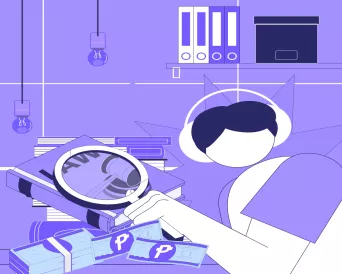
💡 Quick Take: Is debt bad?
Not all utang is bad—some can actually grow their wealth. Yup, we’re talking about good debt. It’s the kind of borrowing that helps you invest in your future, not just survive the present. But in a culture where all debt feels like a red flag, it’s time we rethink what smart borrowing really looks like. Let’s break down good debt vs bad debt and how to tell if a loan is helping or hurting your financial goals.
Let’s be real: the word “debt” has a pretty bad rep—especially here in the Philippines. For many, utang feels like a red flag 🚩, something to avoid at all costs. But here’s the truth: not all debt is bad. In fact, some types of debt—like good debt—can actually help you grow your money, improve your future, and even level up your financial game.
It all comes down to knowing the difference between good debt and bad debt—and using that knowledge to make smarter choices.
Table of Contents

Why Debt Isn’t Always the Enemy
Filipinos often carry a hiya mindset when it comes to debt. We associate it with struggle, shame, or failure. But when used wisely, debt can be a tool—not a trap. The key? Understanding when debt works for you versus when it works against you.
Let’s break it down. 👇
What is Good Debt?
Good debt is any borrowing that helps you build wealth, increase income, or improve long-term financial stability. It’s strategic, intentional, and has the potential to give you returns that are worth more than what you borrowed.
💡 Examples of Good Debt in the Philippines:
- 🏠 Home loans – Property often increases in value over time. Owning a home can give you both stability and a potential ROI.
- 🎓 Education loans – Upskilling through college or specialized courses can lead to better job opportunities and higher income.
- 📈 Business loans – Borrowing capital to grow or start a business can generate income and long-term growth.
👉 Key characteristic: It provides a return on investment (ROI) greater than the cost of borrowing.
What is Bad Debt?
Bad debt, on the other hand, is borrowing for things that don’t increase in value and often lose their worth quickly. It’s usually tied to impulse, short-term pleasure, or keeping up with lifestyle pressure. Instead of building your future, it drains it.
⚠️ Examples of Bad Debt in the Philippines:
- 🛍️ Credit card debt from shopping sprees or luxury items.
- 💸 "5-6" lending schemes with sky-high interest rates.
- ✈️ Travel or gadget loans that don’t offer long-term value.
👉 Key characteristic: It creates a financial burden with no future return—only cost.
The Gray Area: Debts That Could Go Either Way
Not all debt falls neatly into the good or bad categories. Some debts are situational—it all depends on how and why you use them.
- 🚗 Car loans – If your car is essential for work or business? Good debt. Just a status symbol? Bad debt.
- 💳 Credit cards – Useful for emergencies and building credit if paid in full. Dangerous if misused.
- 💼 Personal loans – Smart for consolidating high-interest debts. Risky if used for impulse buys.
How to Tell If a Loan is Strategic or Risky
Here’s your Tonik checklist for evaluating if a loan is helping or hurting:
✅ Purpose of the Loan
- Strategic: Generates income, long-term savings, or future value.
- Risky: Meant for short-term wants or emotional spending.
✅ Interest Rates and Terms
Strategic: Low/fixed rates and realistic repayment plans.
Risky: High or variable rates, hidden fees, or ballooning penalties.
✅ Debt-to-Income (DTI) Ratio
Strategic: Keeps your DTI under 40%—manageable and healthy.
Risky: Pushes you into stress territory or late payments.
✅ Opportunity Cost
Ask yourself: Could I use this money better somewhere else?
How to Make Debt Work for You
📌 Here are smart strategies to use good debt the right way:
- Borrow only for things that appreciate in value or generate cash flow.
- Match loan terms to the lifespan of the asset (e.g., don’t take a 10-year loan for a 2-year item).
- Shop around for the lowest effective interest rate (EIR)—always!
- Build an emergency fund so you’re not forced into high-interest loans for small problems.
Read more about why Filipinos borrow money and why it’s okay here.
When Debt Becomes Risky
🚨 Watch out for these red flags:
- Borrowing more than you can realistically pay back.
- Using loans to cover everyday expenses like groceries or bills.
- Stacking multiple debts without a clear plan to pay them off.
- Borrowing just to maintain a certain lifestyle (a.k.a. “flex debt”).
FAQs on Good Debt vs Bad Debt
💬 Can bad debt ever become good debt?
Yes! For example, refinancing a credit card debt into a lower-interest personal loan can reduce your financial burden and make repayment easier.
💬 Is all education debt considered good?
Not always. It depends on the quality of the education and its ability to increase your income.
💬 What’s the difference between good debt and necessary debt?
Good debt has future ROI. Necessary debt is about survival—like borrowing for a medical emergency. Both have value, but one is strategic, the other is reactive.
💬 Should I pay off all debt before investing?
Depends on the interest rate! If your debt has a high interest rate, pay it down first. If it’s low, and you have extra cash, you can invest wisely alongside repayment.
Ready to Build Credit the Smart Way?
If you’re looking for a safe, responsible way to build your credit, Tonik’s Credit Builder Loan is designed just for that. 💪
You get to build your credit history, improve your chances for future loan approvals, and prove to yourself that you’ve got this. Start your good debt journey the right way. Check out the Tonik Credit Builder Loan today.


